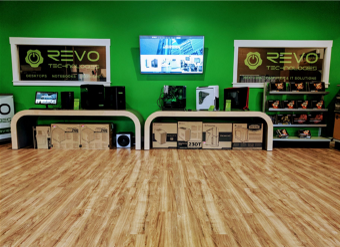Hard Disk: What you can do to repair
If files are no longer readable, often the hard drive is to blame. How to remember it, and what you can do is explained here.
Hard disk errors can cause immense damage. But you can take precautions and in case of doubt also correct them if you notice. We explain what you can do to prevent errors and what to do if the hard drive repair is required. However, it is always a good idea to back up the data before the hard disk gets corrupted.
Different types of errors

First of all, it should be clear what is meant by “hard drive.” For one thing, it’s simply the physical disk itself. Here all kinds of stubborn and sometimes expensive defects can accumulate. On the other hand, this is also the file system of the hard drive that is usually NTFS under Windows and often FAT32 or exFAT for mobile data carriers. Of course, these are not a fixed part of the hardware, but as far as unreadable files are concerned, they can be just as mean.
Besides, it makes a huge difference whether you have an HDD or an SSD use. Hard disk drives (HDD) are the old, large magnetic disks, usually of the order of several terabytes. The data is read in a similar way to a turntable: a customer runs over rotating disks, that is to say, there is a lot of mechanics and moving parts. Solid State Disks (SSDs) are flash memories, which mean huge USB sticks and therefore no moving parts.
HDDs have a lot of moving and thus error-prone components.
The actual detection of errors, however, is not quite trivial. In general, you should suspect hardware and file system when files disappear, or contents of files are corrupted, files cannot be read or written, or Windows disks are sometimes not recognized or simply dropped from the system. If the Windows system itself hangs on a regular basis, that too could be a sign (but also for many other things). Especially with HDDs, there is one unerring sign: The Click of Death, If the record is no longer readable and it clicks loud and clear, the customer hangs – much like a pickup on a turntable. Generally loud, irregular sounds are not a good sign. However, even and slightly “wobbly” buzzing does not have to worry you. But it is better to interpret them as defects before they occur:
Monitor hard disks
Both HDDs and SSDs have a system called SMART: Self-Monitoring, Analysis, and Reporting Technology. In addition, all sorts of status information and data about the state of the hard disk are transmitted. A good tool for the Windows desktop is CrystalDiskInfo. The free program shows the temperature, duration, serial number, connection type, and a lot of details about the health status via a simple status display.
This is doubly useful: On the one hand, you can use all this information super well, for example, to specifically ask support for help. On the other hand, you can see at a glance whether any of the installed hard drives is not running perfectly. As soon as a warning message shows up, you should urgently recalculate the corresponding point in the network. The good thing about the system is that SMART and CrystalDiskInfo do not complain when it’s too late. Usually, you will have time to fix it.




